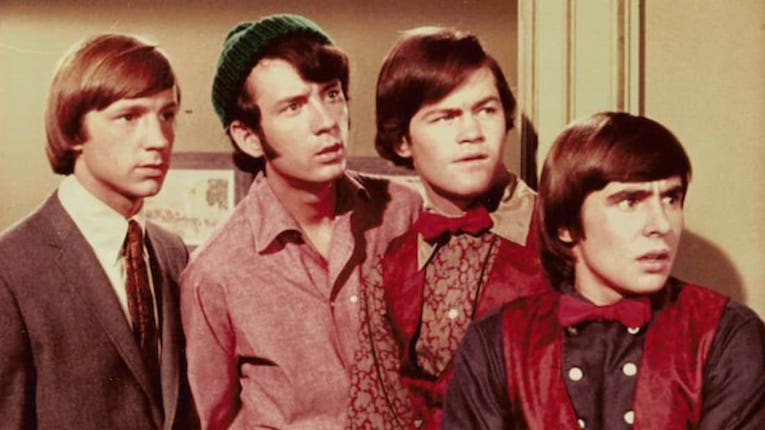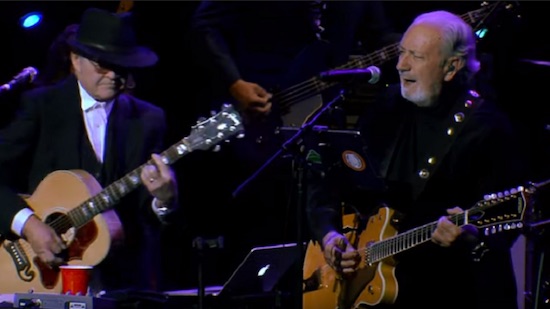
Michael Nesmith
By Jay Luster
“I’m heartbroken. I’ve lost a dear friend and partner. I’m so grateful that we could spend the last couple of months together doing what we loved best — singing, laughing, and doing shtick. I’ll miss it all so much. Especially the shtick. Rest in peace, Nez. … All my love, Micky.” Micky Dolenz
While he may forever be remembered as the Monkee in the pom-pommed wool beanie, Michael Nesmith had a career that spanned six decades. During his life he wrote and produced music for the Monkees, and his own bands, and solo work. He wrote books, produced award-winning TV shows, procured the largest non-theatrical film library in the world, whipped PBS’s butt in a lawsuit over that library, and is even credited as the inventor of MTV. Nevertheless, when he knew the end of his life was near, he returned to performing with the only other remaining Monkee, Micky Dolenz, entertaining crowds.
In 2012, I had the opportunity to interview Micky Dolenz, and we talked a bit about the man he called Nez. He said, “The Monkees weren’t a band starring on a television show. We were actors on a television show portraying a band.” Nesmith, however, wasn’t just an actor. He was a musician who had played sessions on both coasts, and was a prolific songwriter. During his hiring process for the show, Nez was promised some of his songs would be included. NBC and Columbia Records, on the other hand, had different ideas. They believed the Beatles Hard Days Night record, and movie tie-in, might be a formula which could succeed on the small screen. With that in mind, they hired recording industry entrepreneur Don Kirshner as musical director. He immediately hired gunslinger songsmith’s Boyce and Heart for the Monkees first record. The goal was to create predictable commercial hits, and it worked. “Last Train To Clarksville” exploded onto the scene, soared up to number one, and ensured the first season of The Monkees would succeed.

Micky Dolenz, Michael Nesmith
As the first season became the second, Nesmith, feeling Columbia had broken their promise, grew impatient and it led to what Dolenz called “The palace revolt.” He said, “We went on strike.” When the reckoning came with Kirshner and Columbia Records, in a fit of rage Nez punched a hole in the wall and told Kirshner and the attending execs, “That could have been your head!” When it was over, the Monkees, who were by now an actual touring band, wrestled away control, and Kirshner was fired.
The series wound up after the second season, but the music kept coming. Their first record after Kirshner was called Headquarters, and featured six of the fourteen songs written or co-written by Michael Nesmith. Headquarters sailed up to number one, but was displaced the following week by The Beatles Sgt Peppers. It then went on to remain in the number two position for the rest of the summer. Nez and The Monkees had proven their point, and Dolenz said, “We became a band, and Mike Nesmith has often said that it was like Pinocchio actually becoming a real little boy.”
With the Monkees disparagingly referred to as the prefab four, Nesmith’s contribution and influence to their music, as well as his own, and the many other various media art forms he continuously succeeded in, is tragically underrated. How many actors have starred in a television series, produced fifty-five years in the past, and is still in reruns? How many producers and directors can lay claim to six decades of critically acclaimed achievement? Among those achievements are four Grammy Award nominations, and a Video Of The Year win for “Mike Nesmith In Elephant Parts.” How many musicians can claim to be the leader of a band that has sold 75 million records worldwide? Michael Nesmith was all that and more.
RIP Nez
Michael Nesmith December 30, 1942 to December 10, 2021

Leave A Comment